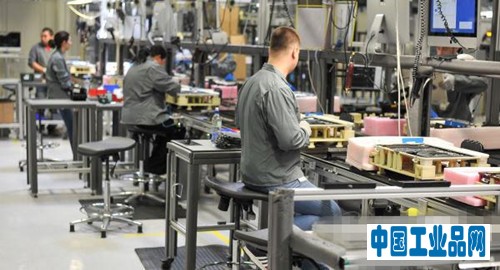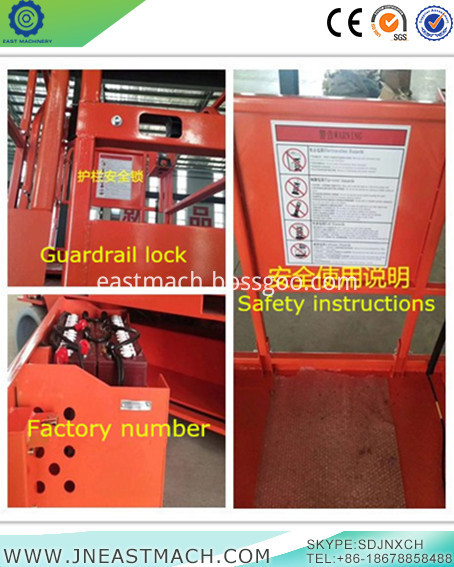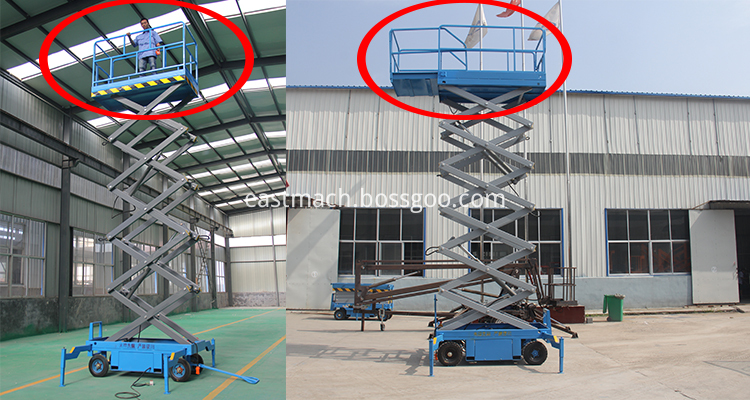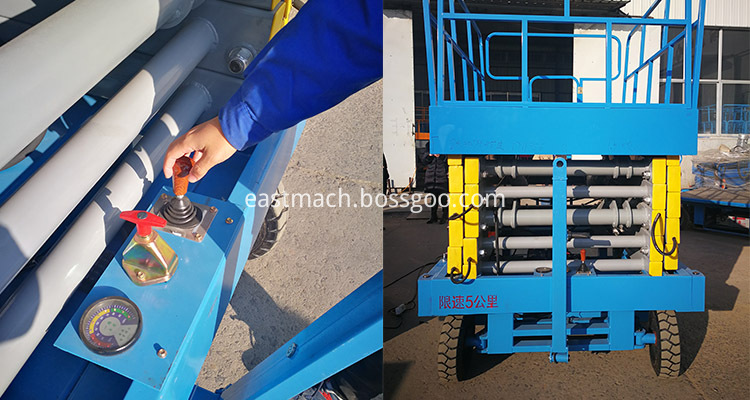Intelligent manufacturing is quietly changing corporate positions Intelligent manufacturing is quietly changing corporate positions
Lift Platform is nearly applicable to work in all industries. Lift Platform Parts are mainly include hydraulic jacking device, battery, remote control handle and so on.
The control panels of Electric Power Scissor Lift are available on the designated floors and the Lift Table.
Scissor Lift Platform Spare Part works through three buttons on the control panels.
Electric Lift Platform Package can be customized according to your requirement.
Machine substitution is just around the corner
"Made in China 2025" proposed that smart manufacturing should be the breakthrough and main attack direction. The core of smart manufacturing is the establishment of smart factories and digital workshops, the development of smart equipment, and intelligent production.
Based on the current status of the industry and the planned development path of “Made in China 2025â€, we can conclude that the future development of China’s smart manufacturing industry will present the following trends:
First, the intelligent transformation and upgrading of equipment is faster than expected. On the one hand, due to the drive of national policies, various localities have issued relevant policies in accordance with the “Made in China 2025†strategic plan and clearly specified the timetable for technological transformation. In 2017, we will usher in a large-scale transformation of equipment, and half of manufacturing-scale production enterprises will realize Fully automatic production; On the other hand, due to the increase in labor costs, recruitment difficulties, prompting companies to adopt machines to replace people. 
Third, the “Internet + equipment manufacturing industry†has spawned new production models and become a hot spot for innovation. "Internet +" makes the manufacturing industry present four major new trends: manufacturing service, customization, organization and decentralization, and manufacturing resource cloudization, which brings about tremendous changes in traditional enterprises' decision-making methods, business models, and business ideas.
Fourth, the rapid development of smart equipment and products, and the intelligent manufacturing process. In the field of “Intelligent Manufacturing Equipmentâ€, key breakthroughs are made in high-end CNC machine tools, industrial robots, additive manufacturing equipment, new sensors, and smart meters. In the “Intelligent Manufacturing Process†field, data networking is the core and Internet technology is used. Leading new technologies will effectively shorten the product development cycle, reduce operating costs, increase production efficiency, improve product quality, reduce resource consumption, and provide personalized products.
Intelligent manufacturing quietly changes the position of the enterprise. With the advancement of smart manufacturing, the position setting of the enterprise is undergoing changes. Some traditional positions, such as time auditors and blueprinters, are disappearing, and equipment maintenance and maintenance personnel are required by numerical control programmers. exuberant.
The rapid development of the industrial robot industry has great demand for robotic application technicians. At present, there is a shortage of 200,000 industrial robot application talents, and it is also growing at a rate of 20% per year. The talent demand is mainly reflected in three aspects: First, the robot manufacturer needs, including robot assembly, sales, after-sales support technology and marketing personnel; Second, the robot system integrator needs, including robot workstation development, installation and debugging, technical support, etc. Professionals; Third, the application of robots needs, including the robot station commissioning and maintenance, operation and programming, and other comprehensive high-quality technical personnel. In particular, the on-site programming and debugging staff of industrial robots is a huge gap.
Smart production has a great demand for compound talents. With the popularization of digital R&D and design management tools, employees need to have the basic qualities to deal with Industry 4.0, and traditional craft jobs are also facing digital transformation. CAD (Computer Aided Design), CAM (Computer Aided Manufacturing), CAE (Computer Aided Simulation) The use of tools such as simulation analysis, CAPP (Computer Aided Process Planning), MES (Production Process Execution Management System), and ERP (Enterprise Resource Planning) has become a basic capability requirement for employees. The role of some traditional posts in production will gradually weaken or even disappear. For example, the position of the blueprinter gradually withdraws from the historical stage, and digital modeling, lean specialists, reverse modeling, 3D printing, precision measurement and inspection positions are increasingly important. These positions currently do not have corresponding majors within the scope of colleges and universities. The position employees are mainly self-cultivating.
Intelligent equipment has great demand for electromechanical composite talents. With the national plan for the numerical control, information and intelligent transformation of traditional enterprises, high-end CNC machine tools, industrial robots, additive manufacturing and other intelligent manufacturing equipment will be popularized, requiring a lot of operation, commissioning, maintenance, repair and renovation Professionals in the area.
Job Structure Changes Put New Requirements on Professional Capabilities Under the background of “Made in China 2025â€, changes in the company’s development trends, positions and personnel needs are impacting higher vocational education, and the connection between talent training standards and market positions is quietly changing.
In “Made in China 2025â€, the “skilled workforce†of enterprises will be reduced, and people will be more engaged in product and process optimization, production system management, etc., and need to have a strong ability to analyze problems and solve problems. "It will increase. To cope with the development opportunity of “Made in China 2025â€, higher vocational colleges should re-examine the positioning of manufacturing specialties, improve the ranks of teachers, and strive to narrow the gap between teaching content and business needs. (Source: Xircom China)





Lift Platform Parts
Lift Tables,Truck Parts Tail Lift,Lift Platform,Vertical Lift Platform Parts
Jinan East Machinery Co.,Ltd. , https://www.jneastmach.com